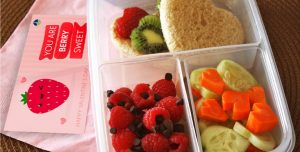Do you dread dinner time? Are you preparing all kinds of sensible meals composed of healthy, appealing foods? Do most of these offerings end up splattering the high-chair or carpeting the floor? To make matters worse, you take your children’s rejection of your “Master Chef” cuisine personally, and you are convinced that this was a sign of parental lapse on your part? What is wrong? Why are these children, such picky eaters?
The daily frustrations of getting your picky eaters to tolerate and eat “normal” foods and a greater variety can be absolutely overwhelming for both the parents and child.
It is not unusual, especially in the toddler years for children to be picky eaters. However, picky eaters can be quite frustrating for parents who are concerned about their children’s eating habits.
In some cases, a toddler that is not eating well or refusing to eat can develop nutrient deficiencies and can become under-weight.
Why toddlers are picky
Children aren’t being picky just to annoy their parents. There are legitimate reasons for picky eating behaviour and if parents can gain an understanding of those reasons, it can help to find ways to get their children to eat healthy, balanced meals.
Being a picky eater is part of what it means to be a toddler. There are developmental reasons why children between one and three years of age peck and poke at their food. After a year of rapid growth (the average one-year-old has tripled her birth weight), toddlers gain weight more slowly. So, of course they need less food. The fact that these children are always on the go also affects their eating patterns. They don’t sit still for anything, even food. Snacking their way through the day is more compatible with these busy explorers’ lifestyle than sitting down to a fully-fledged feast.
Learn to relax
Your job as a parent is simply to prepare the right food nutritiously (steamed rather than boiled, baked rather than fried), and serve it creatively. The rest is up to the child. How much he eats, and if they eat, is mostly his responsibility.
Parents decide: What, where and when a child eats.
Child decides: If, and how much he will eat.
Aim for a good week
Toddlers like to binge on one food at a time. They may eat only fruits one day, and vegetables the next. Since erratic eating habits are as normal as toddler mood swings, expect your child to eat well one day and eat practically nothing the next. Toddlers from one to three years need between 1 000 and 1 300 calories a day, yet they may not eat this amount every day. Aim for a nutritionally-balanced week, not a balanced day.
Children are picky eaters for a few main reasons:
- The toddler is in a manipulative stage of development
- They seek attention through their behaviour
- The toddler has a greater interest in the world around him and loses interest in food
- The growth rate is slower
- Minor illnesses or teething can reduce the appetite
- They prefer sweet over bitter tastes
- They are afraid to try new foods (neophobia)
- Sensory Processing Disorder
Research suggests that both reasons are rooted in their survival instinct. Dislike of bitter foods is a defence mechanism to protect us from eating things that are poisonous. Imagine young prehistoric toddlers picking a berry, leaf or flower from a plant and putting it in their mouths. If they ate it and it was poisonous, they would die. However, they were less likely to eat it because of the aversion to bitter tastes. They would spit it out. Sweet foods, like fruits, on the other hand, are energy-rich foods and it makes sense for children to be naturally attracted to the taste of foods that will give them the most energy.
Neophobia is another defence mechanism. It doesn’t usually kick in until children reach two years of age. Interestingly, that’s about the age when children, in most societies, are no longer breastfed. That means youngsters aren’t completely dependent on their mothers for food. Avoiding unfamiliar foods can actually keep them safe. After all, they have no way of knowing what is and is not safe to eat. Children are naturally “neophobic” which means they have an innate fear of trying anything new or foreign, and this includes food.
Another cause for picky eating is a dislike of particular tastes, smells and textures of foods. A Sensory Processing Disorder, in particular, oral defensiveness, is one of the leading causes of picky eaters. Children dealing with Sensory Processing Disorder can be especially sensitive to certain tastes and textures. They may dislike creamy textures or a mix of textures, like something that is both crunchy and creamy. These children can also be a bit overwhelmed by too many tastes blended together and some of them can distinguish the various herbs and spices in one dish!
Once you understand the source of your child’s picky eating behaviour, you will realise that she is not being difficult or stubborn and you will be ready to help her broaden her tastes.
Tips for getting your picky eater to eat
Sweeten bitter vegetables
Sweetening vegetables can be done a number of ways. You can top them with a little mild vinegar, lemon juice or honey, or you can add caramelized onions to them.
Serve vegetables raw
Most vegetables are sweeter when they are raw, so children who resist eating vegetables may eat them raw. It is a great way to get children to eat green vegetables, like peas and green beans.
Link foods to your child’s interest
This takes a little creativity, but it works well with younger children. Try using some purple food colouring and glitter next time you bake pancakes. Suddenly boring pancakes now becomes Barbie Fairy Princess Pancakes!
Respect your child’s tastes
Everyone has foods they like and dislike. If your child does not want to eat broccoli, then don’t force him. You certainly want to encourage your child to try a variety of foods, but if your child has tried something and says she does not like it, then respect her decision to say “No” to eating it. Try again a few days later. It sometimes takes up to 50 attempts before a child will eat food with a new/different taste and texture. Over time your child may be more willing to try it again.
Offer a snack tray
Use an ice-cube tray, a muffin tin or a compartmentalized dish, and put bite-size portions of colourful and nutritious foods in each section, be creative and call these finger foods playful names that a toddler can appreciate, such as:
- Apple moons
- Avocado boats
- Banana shields
- Broccoli Bushes
- Carrots swords
- Cheese Lego
Place the snack tray on an easy-to-reach table. As your toddler makes his rounds through the house, he can stop, sit down, nibble a bit, and, when he’s done, continue on his way. These foods have a table-life of an hour or two.
Dip it
Young children think that immersing foods in a tasty dip is pure fun (and delightfully messy). Some possibilities to dip into:
- Cottage cheese
- Guacamole
- Pureed fruits or vegetables
- Yoghurt
Spread it
Toddlers like spreading, or more accurately, smearing. Show them how to use a table knife to spread cheese spread, peanut butter and fruit concentrate onto crackers, toast or rice cakes.
Top it
Toddlers are into toppings. Putting nutritious, familiar favourites on top of new and less-desirable foods is a way to broaden the finicky toddler’s menu. Favourite toppings are:
- Yoghurt
- Cream cheese
- Melted cheese
- Guacamole
- Tomato sauce
- Apple sauce
- Peanut butter
Drink it
If your child would rather drink than eat, don’t despair. Make a smoothing – together. Use a meal supplement in preparation of your smoothies.
Cut it up
How much a child will eat often depends on how you cut it. Cut sandwiches, pancakes, waffles and pizza into various bite size shapes, using cookie cutters.
Package it
Appearance is important. For something new and different, why not use your child’s own toy plates or tea set for dishing out a snack. Food served on the back of a tipper truck will also be well received. Children enjoy the unexpected and fanciful when it comes to serving dishes – anything from plastic measuring cups to ice-cream cones.
You can also try the scaled-down approach. Serve bite-sized portions such as mini bread rolls, mini hamburgers, mini hotdogs, mini-quiches etc.
Creative Marketing
Vegetables require some creative marketing, as they seem to be the most contested food in households with young children. How much vegetables do toddlers need? Although children should be offered 3 to 5 servings of veggies per day, for children under 5, each serving need be only a tablespoon for each year of his age. In other words, a two-year-old should ideally consume 2 tablespoons of vegetables 3 to 5 times a day. So if you aren’t the proud parent of a veggie-lover, try the following:
- Plant a garden with your child. Let her help care for the plants, harvest the ripe vegetables and wash and prepare them for cooking.
- Slip grated or diced vegetables into favourite foods. Try adding them to rice, cottage cheese, cream cheese, guacamole or even macaroni & cheese, stews, soups, and pastas.
- Make veggie art. Create colourful faces with olive- slice eyes, tomato ears, mushroom noses, bell-pepper moustaches and any other playful features you can think of.
Respect tiny tummies
Keep food portions small. Wondering how much to offer? A young child’s stomach is approximately the size of his fist. So dish up small portions at first and refill the place when your child asks for more. The less-is-more meal plan is not only more successful with picky eaters; it also has the added benefit of stabilising blood-sugar levels, which in turns minimises mood swings. A hungry child is generally not a happy child.
Use the step-by-step bite rule
Through a process of Systematic Desensitisation, you can introduce the 5 step Bite Rule.
Day 1: Only touch the food (touching)
Day 2: Only give the food a kiss (touching, tasting, smelling)
Day 3: Only touch the food with your front teeth (touching, tasting, smelling, texture)
Day 4: Only touch the food with your back teeth (touching, tasting, smelling, texture, in mouth)
Day 5: One bite, chew and swallow. (Touching, tasting, smelling, texture, chewing, swallows, eat)
The more they see the food, the more familiar it will become and the more likely they will be to try it.
After 5 days the same process can be followed with a new type of food.
Set up a reward system using tokens, stickers etc. (Never reward with food). Reward your child for trying a new food after day 5, even if she only took one bite. Find a reward system which works for both you and your child. It should encourage him to try new foods, tastes and textures.
Praise, Praise, Praise …….positive reinforcement! No punishment.
My feet dangle
Toddlers can concentrate better on the act of eating if their feet are not dangling. Provide grounding for their feet. Children are likely to sit and eat longer at a child-size table and chair where their feet touch the ground.
Let them cook
Children are more likely to eat their own creations, so when appropriate, let your child help prepare the food. Use cookie cutters to create edible designs out of foods like cheese, bread, thin meat slices. Give your child such jobs as tearing and washing lettuce, scrubbing potatoes or stirring batter.
Allow your fussy eaters to explore and play with their food. This will allow them to experience different textures through the tactile system which will ultimately help. Due to oral hypersensitivity, some children will feel safer exploring textures with their hands first, rather than their mouths. It is much less threatening and will lead to a better overall response.
Make every calorie count
Offer food that pack lots of nutrition into small doses. This is particularly important for toddlers who are often as active as rabbits, but who seem to eat like mice.
Nutrient-dense foods that most children are willing to eat include:
- Avocados
- Pasta
- Broccoli
- Peanut butter
- Brown rice
- Potatoes
- Cheese
- Chicken
- Eggs
- Squash
- Fish
- Sweet potatoes
- Yoghurt
Use a fresh food feeder
This will assist your toddler to try new flavours or to introduce regular whole foods, without the risk of choking. It allows your toddler to enjoy lots of delicious foods without the choking risk. Simply put a piece of fruit, vegetables or meat into the mesh bag and snap shut. Your child can chew, suck and enjoy all the whole food goodness and taste, with only the tiniest, digestible pieces coming through. Your child gets great flavour and you get peace of mind.
Add new to the old
Always offer at least one new food with familiar and well-liked choices. That way your child knows that he is not being forced to eat something he is unsure of and may be more tempted to give it a try.
Be a good role model
As a parent, your children watch and mimic what you do (and eat), so make healthy food choices and finish your veggies in front of your kids. After all, how can you expect your child to try broccoli if you won’t eat it yourself?
Watch drinks and snacks
Make sure your child is not eating filler foods before a meal. Keep snacks small and serve them at least 1 ½ hours before mealtime. Toddlers are particularly prone to filling up on too much milk or juice, so watch that his intake does not exceed the recommended daily requirements. At the same time, children need to stay well hydrated. Always offer water to quince a thirst and juice and tea as a snack.
Is it a problem? Should I be worried?
These questions will help you find out if your child is a picky eater. If you answer “Yes” to any of these questions, discuss it with your Health Care Provider to ensure that the problems are address professionally:
- Does your child only eat certain types of food (e.g. fast foods, fried food etc.)?
- Does your child dislike trying new foods?
- Does your child refuse to eat vegetables and/or items from other foods groups?
- Does your child have strong likes and dislikes for certain foods?
- Does your child make meal times very long or makes a fuss over eating?
- Do you use and incentive to encourage your child to finish his/her meal?
- In your opinion, does your child get a good balance of food in each meal?
It may be helpful for parents who are concerned about their toddler’s intake to plot the weight and height on the growth chart to make sure that their child’s growth is normal. If you suspect your child is failing to thrive, go seek professional help. |
Conclusion
It may take weeks, months and sometimes years of active treatment before your child can tolerate enough “normal” foods to get by, eat properly and fit it. You and your child will battle, your child will resist, and you both may have difficulty emotionally dealing with the struggles that present themselves. It may be emotionally and physically exhausting at times and you may want to give up trying.
Get the professional help, guidance and support you need.
References
- http://giftedkids.about.com. Understanding Picky Eaters – Getting Picky Eaters to Eat!
- http://www.askdrsears.com. Feeding the Picky Eater: 17 tips.
- http://www.sensory-processing-disorder.com. Finally, There Is Help For Your Picky Eaters!
- http://recipes.kaboose.com. Helping Your Picky Eater – Tips for getting your child to try new foods.
- http://www.pbs.org. Tips to Help Pre-schoolers Overcome Picky Eating.
- The Picky Eaters Assessment. Pfizer Nutrition.












